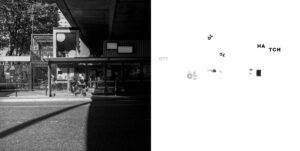[SEM3] Week 3&4 06/20/2022
After last week’s group critique, I’m taking a step further into project 1 by doing more researching on Italo Calvino’s book Invisible Cities (calvino_italo_invisible_cities), in which is structured as a fictional conversation between the real-life historical figures Marco Polo, a Venetian tradesman, and Kublai Khan, the emperor of the Mongol Empire. Marco leaves to travel the empire and returns to tell Kublai about 55 different cities in the empire (within 11 different categories: cities and memory, cities and desire, cities and signs, thin cities, trading cities, cities and eyes, cities and names, cities and the dead, cities and the sky, continuous cities, and hidden cities,) all of which are entirely imaginary. However, even if that travel takes place only in the his imaginations, Invisible Cities pays close attention to the ways in which travel and experiencing new things influence how a person sees the world, ultimately suggesting that a person’s perception of their surroundings is subjective and individualized, informed entirely by their memories, perspective, and experiences.
Everything from cities to objects exists because of memories. No matter where a person goes, they will always be accompanied by past experiences and influenced by the choices they have made before.
Several cities change depends on how a person remembers them. Zirma exists because people repeat their memories of it over and over again in their minds. In Procopia, Marco talks about being in a hotel room with 26 versions of himself—presumably, every version of himself that’s ever been there before. Procopia’s quirk of making real a person’s past selves suggests that whenever a person travels somewhere they’ve already been before, they invoke and must contend with who they were when they were there before. In other words, a person’s experience of a place is filtered through what they remember of it (and of themselves) from the last time.
The novel also implies that a person’s memories are subject to change as they engage with other people. In Euphemia, travelers share personal stories with each other—but upon leaving the city, they find that their personal memories of past events or experiences have shifted thanks to the stories they heard from their fellow travelers on the same subject. This indicates that memory as a whole is extremely subjective and very susceptible to change—in other words, memory is wildly unreliable, as almost any experience can change what a person remembers.
In addition to memories influencing a person’s experience of a place, the choices they make while there can have just as much of an impact. As the novel progresses, the conversations between Marco and Kublai become more and more focused on how they’re interacting with each other, or even if they’re interacting with each other—it’s possible that, like the cities, the dialogue between Marco and Kublai is entirely imagined, even within the world of the already fantastical novel. In cities such as Moriana and Irene, Marco’s interpretation of the location depends on how he does or doesn’t choose to interact with it. In Zemrude, the city looks different depending on whether a person chooses to look up to the sky or down to the dirty streets, while Marco refuses outright to go to Irene—he knows it from afar, and he suggests that if he were to enter it, it would become a different city entirely and may even deserve a new name. Especially in the case of Irene, wherein Marco has the choice to simply avoid the place altogether, the novel suggests that people have some degree of control over how they experience the world. In other places, though people may technically have control over whether or not they go there, what they find when they arrive is guaranteed and outside of the individual’s control. Marco suggests that ultimately, everyone in Zemrude ends up looking down, indicating that enough time somewhere will inevitably lead to disillusionment and pessimism.
Through the reading of the book, I’m trying to push project 1 further conceptually, instead of only focusing on criticizing the desire-based economy and the psychological effects commercials, advertisement, and propagandas have on people’s minds, I’m returning to this central theme on individual’s perception of the world, and how through photo documentations such perception is constantly informed and emphasized by their memories, perspective, and experiences.
In addtion to the book, I’m also looking into Martin Heidegger’s theories on Existentialism, which s a form of philosophical inquiry that explores the problem of human existence and centers on the subjective experience of thinking, feeling, and acting. In Heidegger’s fundamental text Being and Time (1927), “Dasein” is introduced as a term for the type of being that humans possess. Dasein has been translated as “being there.” Memory shapes the present.
Roland Barthes on studium and punctum. Barthes assumes that the automaticity of the camera distinguishes photography from traditional media and has significant implications for how we experience photographs. He advances a theory of photographic meaning that makes a distinction between the studium and the punctum and highlights the punctum as photography-specific. The studium indicates historical, social or cultural meanings extracted via semiotic analysis. The punctum points to those features of a photograph that seem to produce or convey a meaning without invoking any recognizable symbolic system. This kind of meaning is unique to the response of the individual viewer of the image. The punctum punctuates the studium and as a result pierces its viewer. To allow the punctum effect, the viewer must repudiate all knowledge. It should be noted that presenting examples of punctum is an impossible mission. The punctum always turns into the studium when expressed in language.
As a result, I decide to remove all texts from the images to create the punctum.








Recent comments